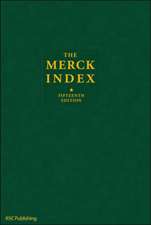The Complex Variable Boundary Element Method in Engineering Analysis
Autor Theodore V. Hromadka, Chintu Laien Limba Engleză Paperback – 21 dec 2011
Preț: 721.40 lei
Preț vechi: 759.37 lei
-5% Nou
Puncte Express: 1082
Preț estimativ în valută:
138.06€ • 143.60$ • 113.97£
138.06€ • 143.60$ • 113.97£
Carte tipărită la comandă
Livrare economică 14-28 aprilie
Preluare comenzi: 021 569.72.76
Specificații
ISBN-13: 9781461291039
ISBN-10: 1461291038
Pagini: 400
Ilustrații: VIII, 389 p.
Dimensiuni: 155 x 235 x 21 mm
Greutate: 0.56 kg
Ediția:Softcover reprint of the original 1st ed. 1987
Editura: Springer
Colecția Springer
Locul publicării:New York, NY, United States
ISBN-10: 1461291038
Pagini: 400
Ilustrații: VIII, 389 p.
Dimensiuni: 155 x 235 x 21 mm
Greutate: 0.56 kg
Ediția:Softcover reprint of the original 1st ed. 1987
Editura: Springer
Colecția Springer
Locul publicării:New York, NY, United States
Public țintă
ResearchCuprins
1 Basic Principles and Mathematical Models of Engineering Mechanics Problems.- 1.0 Introduction.- 1.1 Ideal-Fluid Flow.- 1.2 Porous Media Flow.- 1.3 Fickian Diffusion.- 1.4 Heat Flow.- 1.5 Elasticity Problems.- 1.6 Use of Laplace Equation.- 1.7 Mathematical Modeling.- 1.8 Computational Mechanics and Hydraulics.- 1.9 Modeling of Potential Problems.- 2 A Review of Complex Variable Theory.- 2.0 Introduction.- 2.1 Preliminary Definitions.- 2.2 Polar Forms of Complex Numbers.- 2.3 Limits and Continuity.- 2.4 Derivatives: Analytic Functions.- 2.5 The Cauchy-Riemann Equations and Harmonic Functions.- 2.6 Complex Line Integration.- 2.7 Cauchy’s Integral Theorem.- 2.8 The Cauchy Integral Formula.- 2.9 Taylor Series.- 2.10 Program I: A Complex Polynomial Approximation Method.- 2.11 Complex Variables and Two-Dimensional Fluid Flow.- 3 Mathematical Development of The Complex Variable Boundary Element Method (CVBEM).- 3.0 Introduction.- 3.1 Basic Definitions.- 3.2 Characteristics of the Linear Global Trial Function.- 3.3 The H1 Approximation Function.- 3.4 Higher Order HK Approximation Functions.- 3.5 Using ? or ? Functions as Boundary Conditions.- 4 A Computer Algorithm for the Complex Variable Boundary Element Method.- 4.0 Introduction.- 4.1 A Complex Variable Boundary Element Approximation Model.- 4.2 The Analytic Function Defined by the Approximation $$\hat w\left( z \right)$$.- 4.3 Program 2: A Linear Basis Function Approximation $$\hat w\left( z \right)$$.- 4.4 A Constant Boundary Element Method.- 4.5 Summary of Basic CVBEM Modeling Algorithm.- 5 Reducing CVBEM Approximation Error.- 5.0 Introduction.- 5.1 Application of the CVBEM to the Unit Circle.- 5.2 Approximation Error from the CVBEM.- 5.3 A CVBEM Modeling Strategy to Reduce Approximation Error.- 5.4 A Modified CVBEMNumerical Model.- 5.5 Program 3: A Modified CVBEM Numerical Model.- 5.6 Determining Some Useful Error Bounds for the CVBEM.- 6 The Approximative Boundary.- 6.0 Introduction.- 6.1 Expansion of the HK Approximation Function.- 6.2 Upper Half Plane Boundary Value Problems.- 6.3 The Approximative Boundary for Error Analysis.- 6.4 Program 4: Analytic Continuation Model.- 6.5 Locating Additional Nodal Points on ?.- 7 CVBEM Modeling Techniques.- 7.0 Introduction.- 7.1 Sources and Sinks.- 7.2 Program 5: Source and Sink Model.- 7.3 Regional Inhomogeneity.- 7.4 Program 6: Nonhomogeneous Domain.- 7.5 The Poisson Equation.- 7.6 Computer-Aided-Analysis and the CVBEM.- 8 CVBEM Applications.- 8.0 Introduction.- 8.1 Modeling Nonuniform St. Venant Torsion.- 8.2 Numerical Calibration of Domain Models.- 8.3 Modeling Steady State, Advective Contaminant Transport.- 8.4 A Simple Model of Soil Water Phase Change.- 8.5 Modeling Two-Dimensional Steady State Soil Freezing Fronts.- References.- List of Symbols.- Mathematical Notations.










